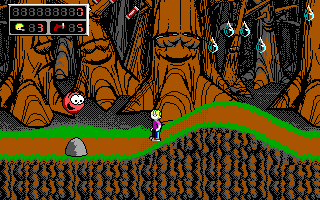IoT. Companies are designing it. Companies acquire other companies making it, and it is going to be a market of Billions of dollars. But no company has it. What is it? This thing called the Internet of Things.
For a couple of years we’ve been hearing about how the Internet of Things (IoT) or Internet of Everything (IoE) is coming and that is going to revolutionize everything. Funny thing, I worked on it long before it was even called IoT, and I can tell you much hasn’t changed. These are grand ideas that require a fundamental revolution in our technology but being built on the back of basically the same technology we’ve been using for 10+ years.
As the precursor to the IoT, the Department of Defense funded initiatives to develop smart sensor networks that would cost nothing and monitor everything. Applications were clearly military in nature to monitor soldiers and the battlefield. The National Science Foundation also provided funding for some of the more civilian applications such as mine monitoring, structural health monitoring, medical monitoring, etc. These Wireless Sensor Networks were developed by many universities worldwide. A few startups even started commercializing some platforms and either died or evolved into developing IP based products. I myself developed a few Wireless Sensor nodes. These “Motes” as they came to be called had a few issues:
1) Power Consumption – A useful platform is one that is operating and sending data, but battery technology has progressed very little compared to semiconductors. This forces these platforms have to sleep for long periods of time in order to last long enough. Wireless transmissions are very expensive in terms of power and require complex algorithms.
2) Cost – The idea was to deploy millions of low cost sensors that wouldn’t need to be retrieved. Needless to say, using Commercial components made reasonable systems rather expensive. A few custom ICs made that integrated complete WSN functionality were interesting, but never really made it out there.
3) Limited Functionality – The limitation in size and power resulted in limited applications. Video and audio require significant processing that drains batteries easily.
The biggest question back then, and now, is what to monitor. If sensor nodes were free and last forever, then we would deploy them everywhere. But they are now and so we must strategically fit them where they would provide the most value. Today you hear the internet of everything. Do I really need to monitor my chair? Does it really provide me with any value?
The answer to this question is basically that WSNs and IoT will move at the pace where they would provide value and can be “absorbed” by customers. As an example, WSN technology made it to some data-centers where they could save money by monitoring power consumption and improving power efficiency. Clearly a good value proposition where you could show quick savings. Today you see Internet enabled outlets, Smartphone enabled key locks, etc.
Another issue back then was the diverging technologies used for wireless connectivity. 2.4GHz, 900MHz, Wi-Fi, Sonar, and many other low level layers were used, making compatibility impossible. Some of this hasn’t changed.
In many ways, IoT is very much the Gold rushes of old, with the usual results:
1) Most will try and fail to make a dent in the market, either to be acquired or simply disappear
2) Some will figure out good and sensible applications and solutions that people actually want.
3) Everyone wants a piece of the action and is supposedly moving into position to extract all they can, but few actually understand what it will be.
#2 is critical. While talking with people developing IoT solutions I often ask what are their customers going to monitor. “Everything” is one of the most common answers I get.
Don’t develop a generic system that does everything. Start attacking problems that IoT technologies can solve. People will pay for this value.
One company that seems to be attacking the issue the right way is Nest Labs, the developer of the Nest Thermostat and Smoke Alarm. Tony Faddell, who worked at Apple designing the iPod and left to start Nest hates the IoT monkier. He’s right. He also says that companies should focus on solving actual problems. The Nest Thermostat and Smoke alarm aren’t billed as IoT devices, but just devices that help improve household items.




